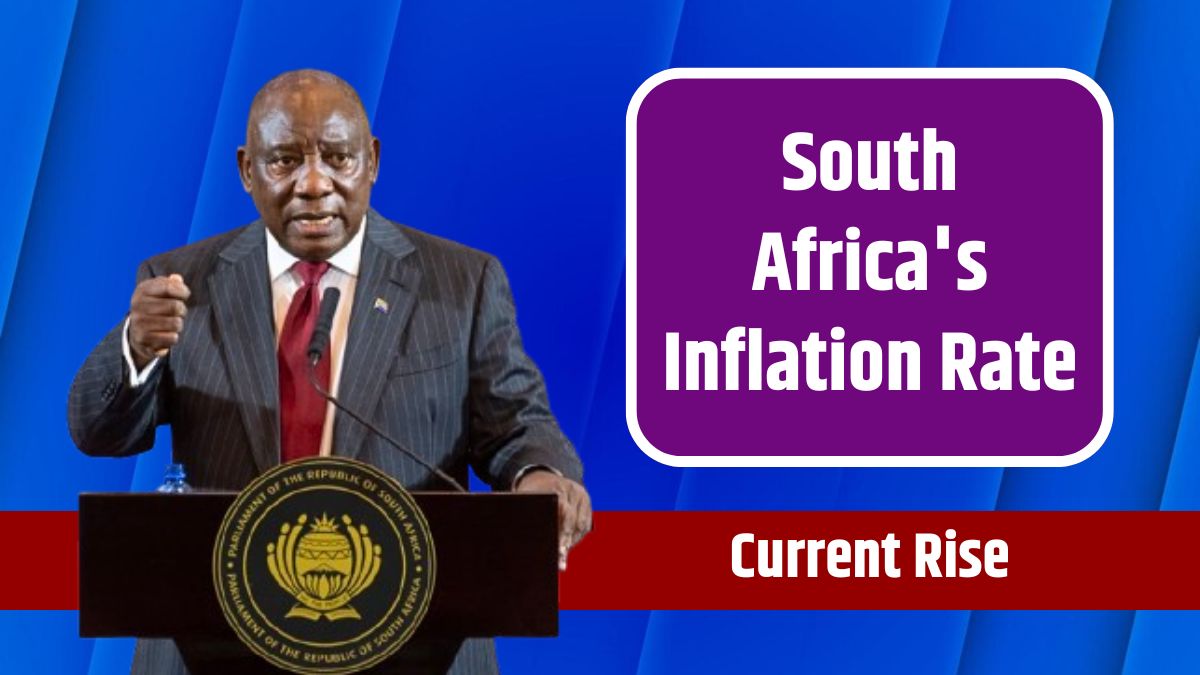Inflation in South Africa has been steadily climbing, affecting daily expenses for households across the country. This rise in inflation is primarily measured by the Consumer Price Index (CPI), which tracks the changes in prices for various goods and services. With South Africa’s inflation rate currently at 5.4%, this increase has already impacted the economy by reducing purchasing power and prompting businesses and individuals to adapt.
Current Inflation Trends
In recent months, South Africa’s inflation rate has fluctuated significantly. In June, the inflation rate was 4.7%, the lowest since July 2021. However, in August, it rose to 4.8%, followed by another increase in September, bringing the rate to its current 5.4%. This consistent upward trend highlights an ongoing challenge for consumers, businesses, and policymakers alike, as higher inflation typically reduces spending power, making it harder to afford goods and services.
Rising inflation also complicates budgeting and financial planning for businesses, particularly those relying on cost stability to maintain profits. For consumers, this means more money is required to maintain the same standard of living, putting financial strain on households.
Economic Impact
Alongside the general inflation rate, specific sectors have seen considerable price hikes:
- Fuel Costs: Fuel prices, a major driver of inflation, increased significantly, with inland 95-octane petrol rising to R171 per liter. Annual fuel inflation rose from -11.7% to 1.5%.
- Food and Beverages: The food and non-alcoholic beverage category saw an annual inflation rate of 8.1% in September, a small increase from 8% in August. Key changes include:
- Meat: Prices rose by 0.6% from August to September.
- Eggs: After a decline in August, egg prices saw a slight rise of 0.3%.
- Bread and Cereals: Decreased slightly to 9.2% from 9.9%.
- Hot Beverages: Increased by 3.5% between August and September, with notable price hikes for instant coffee (4.8%) and rooibos tea (3.7%).
- Chicken: Prices for fresh whole and portions increased by an average of 2.2%.
- Health Costs: Health sector inflation also rose from 6.2% to 6.5%, marking the highest level since November 2017. This increase means that health-related expenses, like consultations, medications, and hospital services, are becoming more costly.
- Other Notable Price Hikes:
- Pumpkin: Increased by 18.9%
- Petrol: Up by 7.7%
- Bananas: Rose by 8.6%
- Diesel: Increased by 7.5%
- TV Licenses and Subscriptions: Up by 2.8%
- Rice and Ground Coffee: Increased by 2.7% and 4.6%, respectively
Inflation Forecast
Looking ahead, South Africa’s inflation outlook remains uncertain. High inflation could mean continued price increases for essential goods and services, further straining households and the economy. Additionally, prolonged inflation can reduce consumer confidence and make businesses hesitant to invest or expand, as costs and revenues become harder to predict.
Inflation also impacts fiscal policies, as tax brackets often don’t adjust quickly enough to rising costs, causing taxpayers to pay more despite no real increase in their income. This challenge, coupled with potential shortages from stockpiling, underscores the need for careful inflation management.
Effects of Rising Inflation
The effects of rising inflation are far-reaching, with impacts on various sectors and the economy at large. Some notable consequences include:
- Decreased Spending Power: As prices rise, each rand buys less, forcing households to prioritize essential purchases over discretionary spending.
- Reduced Investment Confidence: Unpredictable inflation makes investors and businesses wary of committing to new projects or expansions, which can slow economic growth.
- Increased Tax Burden: Without inflation-adjusted tax brackets, citizens end up paying more in taxes, further straining household budgets.
- Stockpiling and Shortages: Consumers may buy in bulk to avoid future price increases, creating artificial shortages and raising demand for certain products, which can lead to further price hikes.
To counter these effects, the South African government is expected to continue monitoring inflation closely, implementing policies to help stabilize prices and prevent further erosion of purchasing power. By effectively managing inflation, the government aims to support economic stability and protect consumers from excessive financial strain.
With fuel, food, and essential items all rising in price, staying informed and adapting personal budgets is essential. South Africans can access further detailed inflation updates and forecasts on the Statistics South Africa website, which provides real-time data and helps consumers and businesses anticipate future changes.
FAQs
What is South Africa’s current inflation rate?
The inflation rate is currently 5.4%.
Which sectors have seen the highest price hikes?
Fuel, food, and health have the most notable increases.
What is the forecast for South Africa’s inflation?
The forecast remains uncertain with likely continued increases.
How does inflation affect investments?
High inflation reduces investment confidence due to unpredictability.
Where can I check inflation updates?
Visit the Statistics South Africa website for the latest data.











